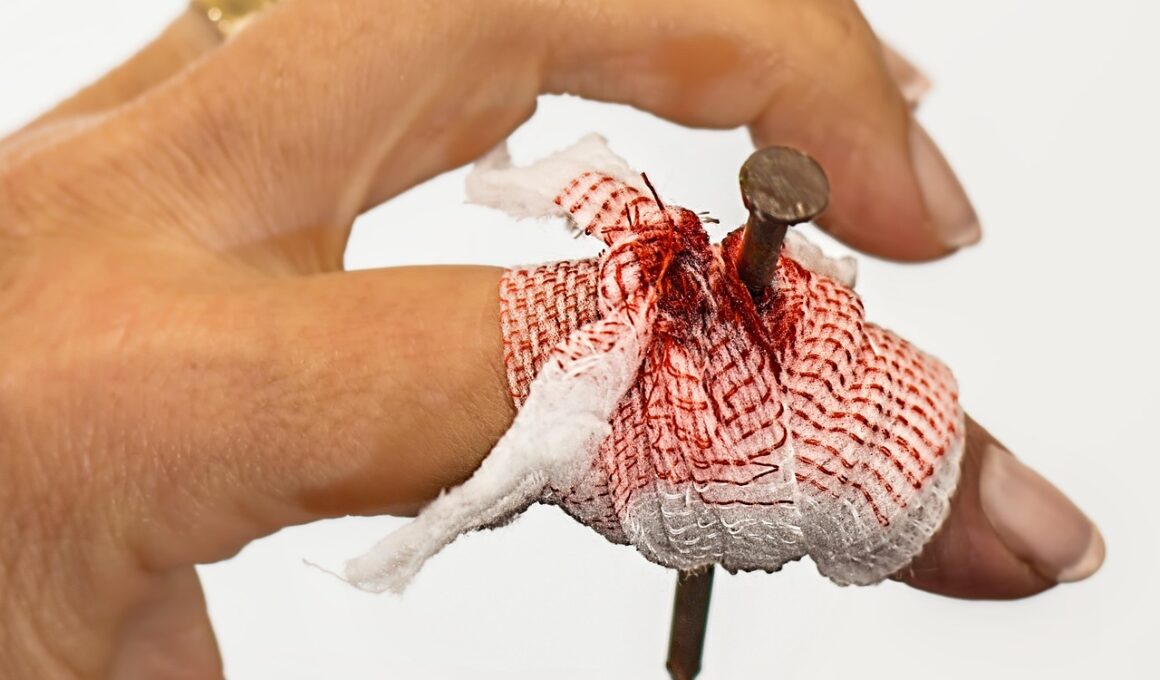Ethical Approaches to Managing Career-Ending Injuries
In the realm of sports medicine, managing career-ending injuries ethically involves a complex interplay of considerations. Athletes place a significant amount of trust in their medical professionals. This relationship requires a careful balance between the athletes’ well-being and the pressures of performance. Ethical guidelines, such as those provided by the American Medical Association, advocate for informed consent and the prioritization of the athlete’s health over competitive success. The potential for long-term consequences necessitates a thorough evaluation of treatment plans, ensuring they align with the athlete’s values and preferences. Furthermore, the timing of interventions must be handled delicately. Physicians must consider when to recommend retirement or alternative careers to athletes facing irreversible injuries. Alongside medical knowledge, understanding the psychological impacts of these injuries adds another layer of complexity. Rehabilitation professionals must effectively communicate with athletes, ensuring that they feel supported through their decision-making processes. As sports evolve, so too does the ethical landscape surrounding them. Keeping abreast of these changes allows practitioners to maintain ethical standards while providing the best possible care for their patients.
A key aspect of managing career-ending injuries ethically involves recognizing the athlete’s autonomy. Athletes often experience a strong emotional connection to their sport and may resist recommendations to step away from competition. This resistance can lead to an ethical dilemma for medical professionals who must assess both medical and personal implications. They bear the responsibility of guiding athletes toward making informed choices about their future. This requires a thorough exploration of alternatives, rehabilitation processes, and potential for recovery. Additionally, practitioners must advocate for mental health support, as the psychological aftermath of a career-ending injury can be profound. A comprehensive approach can help athletes transition to new life paths successfully, reducing the chances of negative repercussions. The sports medicine team should collaborate to provide a robust support network, consisting of psychologists, counselors, and other specialists. Addressing both the physical and emotional aspects ensures a more holistic approach to recovery. Transparency in communication is essential. Engaging athletes in dialogue about their injury and its consequences fosters trust. This trust empowers athletes to take an active role in their treatment and future goals, facilitating a smoother transition from sport to life beyond athletics.
Importance of Collaborative Decision-Making
Collaborative decision-making is vital in ethically managing career-ending injuries and should involve athletes, medical teams, coaches, and family members. Empowering athletes to participate in discussions about their injuries ensures that their concerns and aspirations influence treatment plans. A multidisciplinary approach enables professionals to pool their expertise, enhancing the care athletes receive and ensuring considerations from all angles are considered. Moreover, participating in shared decision-making fosters a sense of control for athletes over their futures. Athletes may feel overwhelmed by the complex, often intimidating medical language and processes, increasing their risk of feeling lost in their treatment journey. Education plays a crucial role; tools such as visual aids and simplified explanations can bridge gaps in understanding. Additionally, debates should focus not only on injury management but also on the mental and emotional impact of prolonged recovery periods. Engaging coaches can offer insights into an athlete’s competitive mindset, impacting decision-making processes positively. Family members often provide needed support, reinforcing the athlete’s commitment to exploring options. Collaboration builds a sense of community and helps transition an athlete from their sports career thoughtfully and effectively, ensuring their dignity and long-term well-being remain priorities.
The role of technology in sports medicine has expanded significantly, influencing the ethical management of career-ending injuries. Novel diagnostic tools and treatment options offer new avenues for healing. However, these advancements also raise ethical questions regarding dependency on technology and the personal connection in care. Technology can create barriers; excessive reliance on diagnostic tools may overshadow the human element essential in physician-patient relationships. Effective treatment necessitates balancing modern technologies with traditional methods. Physicians must guide athletes in using technology responsibly—emphasizing that while it can aid decision-making, it should not replace informed dialogue or human empathy. Privacy concerns also arise with the collection and storage of personal health data, where breaches could have significant repercussions on athletes’ futures. Upholding data integrity is critical to protect athletes’ rights and support their decision-making processes. With technology advancing rapidly, establishing ethical frameworks governing its use ensures that athletes are safeguarded and supported appropriately. Continuous education about emerging technologies assists both athletes and medical practitioners. Ultimately, steering these technologies toward providing customized solutions can enhance recovery pathways, provided that empathy remains a focal point in athlete care.
Long-term Effects on Athletes
Understanding the long-term effects of career-ending injuries is crucial for ethical considerations in athletes’ health management. Chronic pain, mental health issues, and adjustment difficulties often emerge post-injury. It is essential to investigate these factors to design effective support systems. Healthcare professionals should assess not only the physical ramifications but also the emotional and societal impacts on transitioning athletes. Active engagement in physical therapy or rehabilitation can provide a semblance of continuity, decreasing the potential for feelings of loss or isolation. Emotional counseling can further aid in this transition, helping athletes to redefine their identities beyond their sports careers. Family support structures must be fostered, ensuring those close to the athlete understand the challenges they face and respond effectively. Providing athletes with resources such as support groups or peer connections can help them navigate their new realities. Recognizing these long-term effects instills a sense of duty in sports medicine professionals, ensuring they advocate for comprehensive care. Building a foundation that addresses these challenges can promote healthier, more successful transitions for athletes as they face their new lives beyond competition.
Ethical dilemmas can often arise when evaluating potential return-to-play scenarios post-injury. Medical practitioners must weigh risks and benefits continuously while prioritizing athletes’ health and safety. Certain pressures from coaches or the sporting community can lead to feelings of obligation among athletes to return prematurely. Open conversations about risks involved in returning to play can mitigate coercive influences, ensuring athletes understand the implications on their health. Health professionals must communicate clearly, providing a comprehensive understanding of the potential for re-injury and the long-term consequences of continuing play after a serious injury. To facilitate informed decisions, the implementation of return-to-play protocols grounded in evidence-based medicine is critical. These protocols can help manage expectations and harmonize the balance of athlete return with safety considerations. Regular assessments and ongoing communication are necessary to adapt to evolving recovery stages. Stakeholders must stay vigilant, ensuring that athletes’ welfare is non-negotiable in these decisions. Advocacy for strict adherence to safety guidelines reinforces a protective framework for injured athletes, furthering their well-being and autonomy in making health-focused decisions.
Future Directions in Sports Medicine Ethics
Looking ahead, the ethical landscape of sports medicine management will continue to evolve as advancements in science, technology, and societal norms shape the nature of care. As society becomes increasingly aware of athletes’ psychological and emotional needs, sports medicine practitioners must adapt their ethical approaches accordingly. Emphasizing holistic care will likely become more central, integrating mental health considerations into injury management protocols. Future policies may also evolve to establish clear guidelines on physicians’ roles in navigating conflicts among athletes, teams, and sponsors. Addressing career-ending injuries will necessitate innovative methods to manage recovery processes, including telehealth or innovative rehabilitation strategies. Legislative frameworks may emerge to support athletes’ rights during recovery, ensuring they receive the care they deserve. Additionally, increased emphasis on education and training for medical professionals in ethical practices can enhance the clinical setting atmosphere. As sports continue to grow, fostering a culture that values athletes as whole individuals—not just competitors—will be crucial. Ethically managing career-ending injuries ultimately requires a collective effort, championing collaborative decision-making and supporting athletes throughout their recovery journeys, ensuring they thrive both in and beyond sports.
In summation, ethical approaches to career-ending injury management in sports medicine are multi-faceted and require careful consideration of various factors. Athletes, often faced with intense emotional turmoil, depend heavily on the expertise and compassion of their medical teams. Practitioners must prioritize the mental well-being of athletes alongside their physical recovery. Establishing trust and transparency guides athletes in making informed decisions about their futures, empowering them. Collaboration and communication among all stakeholders are foundational for establishing pathways leading to healthy transitions. The integration of technology should enhance care while ensuring that human empathy remains paramount. Importantly, long-term effects on athletes underscore a shared responsibility to emphasize ongoing support and holistic methods for recovery. As we move forward in sports medicine, the ethical frameworks guiding practices must continue to adapt to an ever-evolving landscape. With a focus on innovative, athlete-centered care, we ensure that the dignity, autonomy, and well-being of athletes are placed at the forefront, enabling them to not only recover but to thrive as individuals beyond the field.


